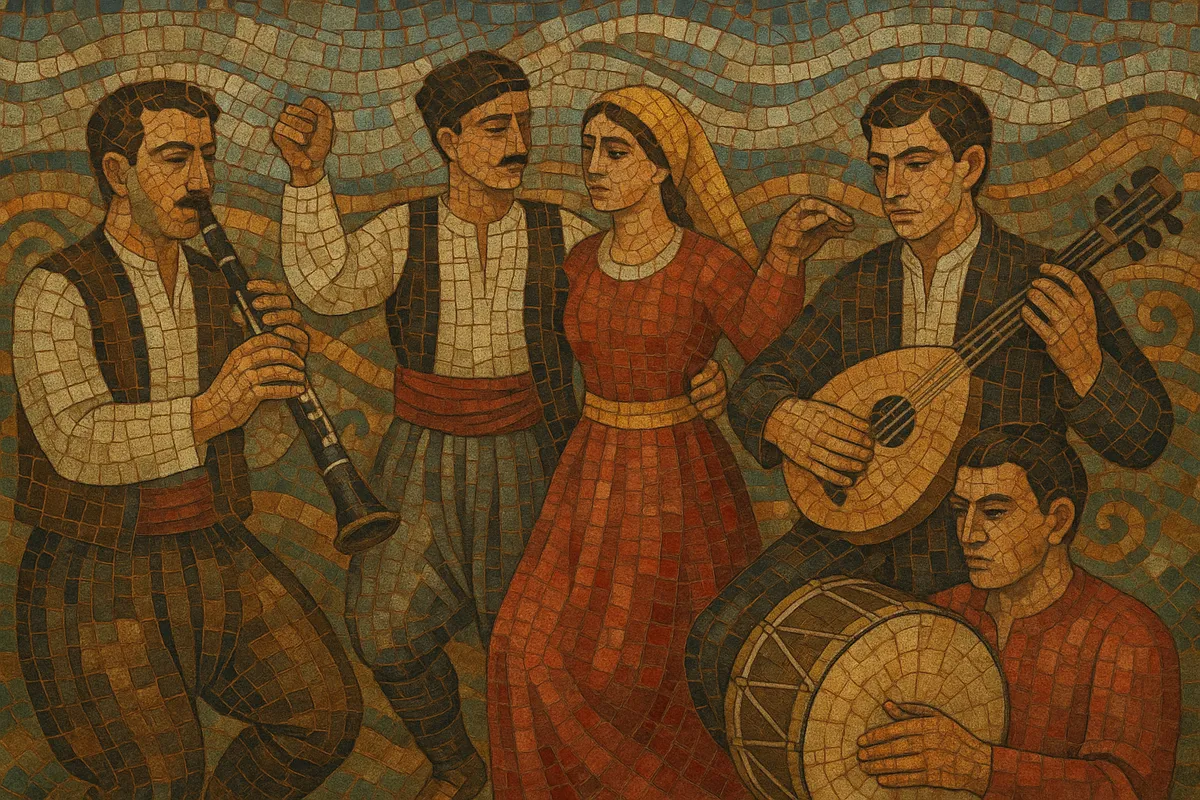Dimotiko (Δημοτικό) is the umbrella term for traditional Greek folk music rooted in rural life, communal rituals, and dance. It encompasses a wide range of regional styles and song types—dance songs (syrtos, kalamatianos, tsamiko), narrative ballads (paraloges), laments (mirologia), wedding and seasonal songs—performed with modal melodies and rich ornamentation.
The sound world is characteristically modal (drawing on Byzantine echoi and Ottoman/Turkish makam practice), with heterophonic textures, drones, and free-rhythm introductions (taximi) by solo instruments such as clarinet or violin. Instrumentation varies by region but often includes klarino (clarinet), violin, laouto (long-necked lute), santouri (hammered dulcimer), gaida (bagpipe), daouli (tabor drum), defi (frame drum), lyra (in Crete and Pontus), and zournas (shawm). Lyrics, frequently in the 15-syllable political verse (dekapentasyllabos), narrate local history, heroism, love, exile, and the cycle of life.
As dance music, dimotiko follows asymmetrical meters (e.g., 7/8 for kalamatianos) and steady, grounded grooves designed for communal participation. As song, it prizes expressive melisma, microtonal inflection (where regional practice calls for it), and a direct connection to collective memory.
Dimotiko arose from centuries-old Greek rural song traditions, consolidating during the 1800s out of earlier Byzantine chant practice and modal folk repertoires shaped by life under the Ottoman Empire. Village festivities, religious calendars, and agrarian cycles provided the functional context for songs and dances, while narrative ballads preserved collective memory of wars, brigands (klephtika), and local heroes.
The genre is inherently regional: Epirus favors clarinet-led pentatonic laments and free-rhythm mirologia; Roumeli and the Peloponnese are strongholds of tsamiko and kalamatianos; Macedonia and Thrace feature gaida (bagpipe) and zournas with powerful outdoor textures; the Aegean islands cultivate buoyant syrta and karsilamas; Crete centers the lyra, laouto, and rhymed couplets (mantinades). Despite differences, a shared modal language, heterophony, and dance utility tie these practices together.
With the advent of recording in the early 20th century, dimotiko moved from village squares to 78 rpm discs and radio, standardizing repertory and spreading local idioms nationwide. Urban musicians adopted rural material, and reciprocal exchange with urban genres—especially rebetiko and later laiko—reshaped performance practice (e.g., clearer forms, more virtuosic introductions, and expanded instrumental roles).
From the mid-20th century, collectors and performers (notably Domna Samiou and Chronis Aidonidis) documented and popularized traditional variants. Folklore ensembles, festivals, and conservatory programs bolstered transmission. Today, dimotiko thrives in local panigyria (feast-days), dance associations, and on stage, while contemporary artists blend its modal and rhythmic vocabulary into world-fusion and art-music contexts.


